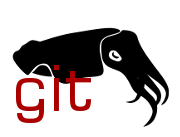diff options
| author | James Bottomley <jejb@mulgrave.il.steeleye.com> | 2006-03-21 13:05:45 -0600 |
|---|---|---|
| committer | James Bottomley <jejb@mulgrave.il.steeleye.com> | 2006-03-21 13:05:45 -0600 |
| commit | d04cdb64212eb5ae6a98026a97dda626e40e8e9a (patch) | |
| tree | b6a7dbb21ccfceb915844e9a330b3d3dfcaf3c5b /Documentation/video4linux/cpia2_overview.txt | |
| parent | 2f8600dff2b140096a7df781884e918a16aa90e0 (diff) | |
| parent | ec1248e70edc5cf7b485efcc7b41e44e10f422e5 (diff) | |
| download | linux-d04cdb64212eb5ae6a98026a97dda626e40e8e9a.tar.gz linux-d04cdb64212eb5ae6a98026a97dda626e40e8e9a.tar.bz2 linux-d04cdb64212eb5ae6a98026a97dda626e40e8e9a.zip | |
Merge ../linux-2.6
Diffstat (limited to 'Documentation/video4linux/cpia2_overview.txt')
| -rw-r--r-- | Documentation/video4linux/cpia2_overview.txt | 38 |
1 files changed, 38 insertions, 0 deletions
diff --git a/Documentation/video4linux/cpia2_overview.txt b/Documentation/video4linux/cpia2_overview.txt new file mode 100644 index 000000000000..a6e53665216b --- /dev/null +++ b/Documentation/video4linux/cpia2_overview.txt @@ -0,0 +1,38 @@ + Programmer's View of Cpia2 + +Cpia2 is the second generation video coprocessor from VLSI Vision Ltd (now a +division of ST Microelectronics). There are two versions. The first is the +STV0672, which is capable of up to 30 frames per second (fps) in frame sizes +up to CIF, and 15 fps for VGA frames. The STV0676 is an improved version, +which can handle up to 30 fps VGA. Both coprocessors can be attached to two +CMOS sensors - the vvl6410 CIF sensor and the vvl6500 VGA sensor. These will +be referred to as the 410 and the 500 sensors, or the CIF and VGA sensors. + +The two chipsets operate almost identically. The core is an 8051 processor, +running two different versions of firmware. The 672 runs the VP4 video +processor code, the 676 runs VP5. There are a few differences in register +mappings for the two chips. In these cases, the symbols defined in the +header files are marked with VP4 or VP5 as part of the symbol name. + +The cameras appear externally as three sets of registers. Setting register +values is the only way to control the camera. Some settings are +interdependant, such as the sequence required to power up the camera. I will +try to make note of all of these cases. + +The register sets are called blocks. Block 0 is the system block. This +section is always powered on when the camera is plugged in. It contains +registers that control housekeeping functions such as powering up the video +processor. The video processor is the VP block. These registers control +how the video from the sensor is processed. Examples are timing registers, +user mode (vga, qvga), scaling, cropping, framerates, and so on. The last +block is the video compressor (VC). The video stream sent from the camera is +compressed as Motion JPEG (JPEGA). The VC controls all of the compression +parameters. Looking at the file cpia2_registers.h, you can get a full view +of these registers and the possible values for most of them. + +One or more registers can be set or read by sending a usb control message to +the camera. There are three modes for this. Block mode requests a number +of contiguous registers. Random mode reads or writes random registers with +a tuple structure containing address/value pairs. The repeat mode is only +used by VP4 to load a firmware patch. It contains a starting address and +a sequence of bytes to be written into a gpio port.
\ No newline at end of file |
